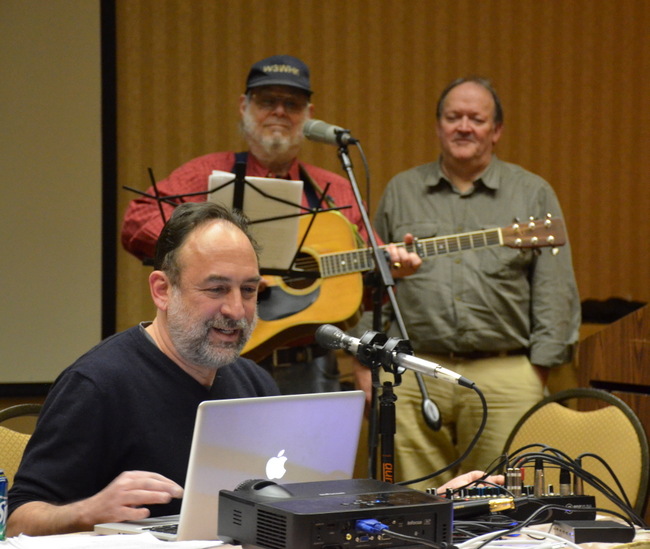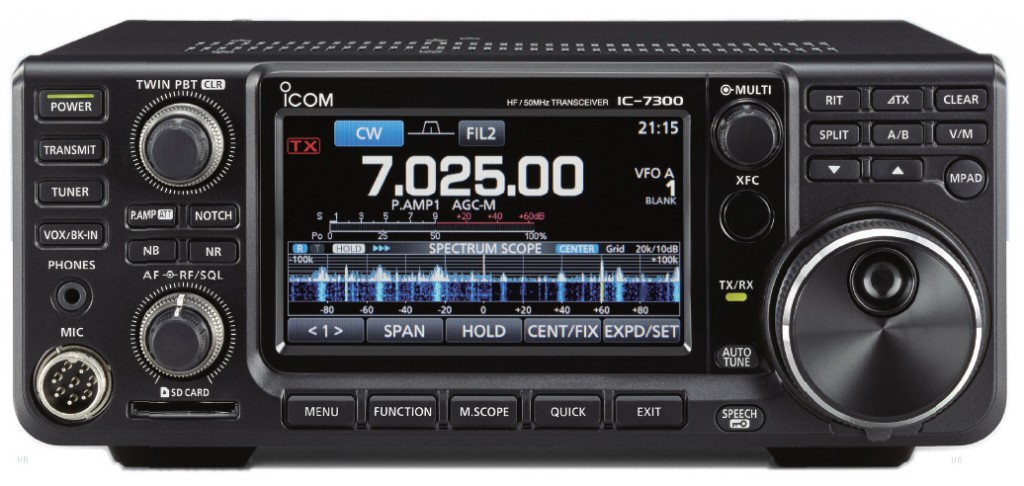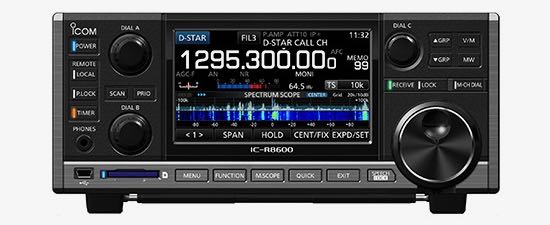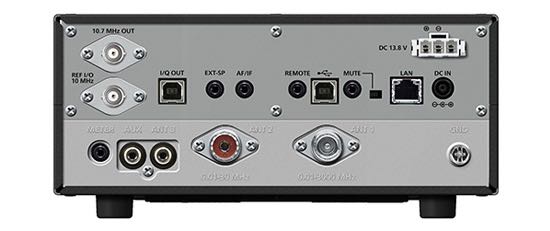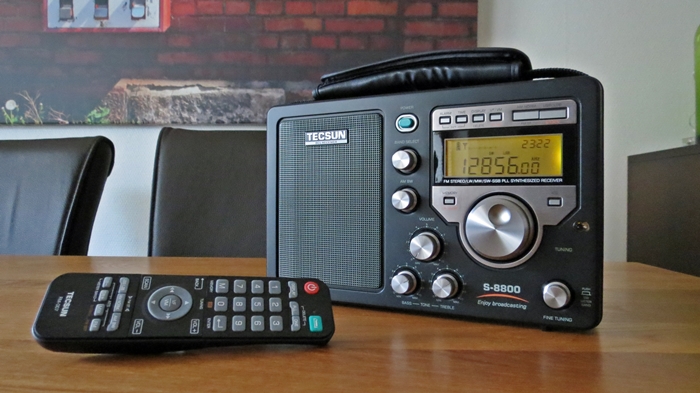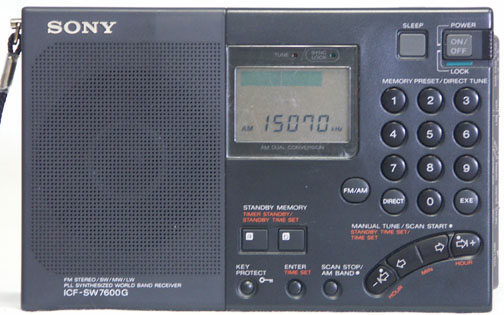
The Sony ICF-SW7600G (Photo: Universal Radio)
This is a guest-post by Eric, WD8RIF.
I’ve had my Sony ICF-SW7600G for almost twenty years. Early on, my very young son broke the receiver’s telescoping whip antenna and it was a simple and inexpensive matter to order a replacement whip assembly from Universal Radio, the Sony dealer from whom I had purchased the radio.
Recently, the receiver’s antenna failed at the pivot-point. First, the factory-supplied countersunk screw’s Phillips-head stripped out through repeated attempts to tighten the pivot over the years until finally I had to replace the screw. The best replacement screw I could find was a 2mm x 6 Allen-head screw from an R/C hobby shop that appeared to work fine until I managed to strip the antenna’s threads through over-tightening this screw. (Perhaps the Allen wrench simply provided too much torque for such a small screw.)
Clearly, it was time to actually buy a replacement antenna. This turned out to be easier said than done. Universal Radio is no longer a Sony distributor and has no access to parts for Sony products. A visit to the Sony website disclosed that service-parts are handled by two other companies, neither of which could provide the antenna—a surprising thing to discover since I think the antenna used in the ICF-SW7600G is the same part which is used in the current-model ICF-SW7600GR. A search on Amazon disclosed a seller offering the part for over $52, far more than I wanted to pay. Perhaps belatedly, I thought to check eBay where I found several listings, some offering the genuine Sony part shipped directly from Japan. I was intrigued, however, in the listing by stone_deng (link) who offered a non-OEM replacement antenna, shipped from Virginia, for $16.80 with free shipping. The description claimed the antenna was a perfect-fit replacement. Figuring the price would make this a good gamble, and because I wouldn’t have to wait weeks for delivery from Japan, I placed an order for one on a Monday evening and the postman delivered the antenna to my mailbox the following Friday. (I noticed as I was composing this post that stone_deng has raised the price for this antenna to $19.90 with free shipping.)
In comparing the replacement antenna with my original Sony part, the only difference I could see is that the metal tip of the replacement antenna is of a different style. Dimension-wise, the two antennas appeared to be identical.
Installation of the new antenna was simple. A single screw secures the antenna to the radio.
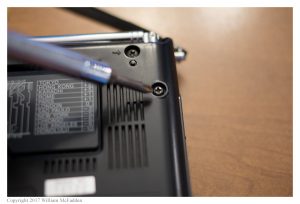 Remove this screw and pull the antenna straight out of the receiver.
Remove this screw and pull the antenna straight out of the receiver.
It should be possible to slip the new antenna into the hole, twisting it to properly line up the mounting-flange, and run the screw back into place. In my case, the new antenna insisted on snagging on something inside the radio and I ended up removing the rear-panel entirely to install the new antenna rather than try to force the antenna into place. Fortunately, the rear panel is easily removed.

Remove the battery-cover and the four AA cells. Remove the five black Phillips-head screws that are marked on the rear panel with arrows. The rear panel will then lift straight up. Insert the new antenna into its hole, lining up the mounting flange with the screw-hole, and insert and tighten the screw. Carefully place the rear panel into place, lining up the four screw holes, and insert and tighten the five screws. Re-insert the AA cells and replace the battery cover.
I’m hopeful that this non-OEM antenna will prove to be rugged but time will tell. If this antenna proves to be inferior than the original in some way, I will post a follow-up to this post.
Obligatory disclaimer: I don’t know stone_deng, and I don’t have any financial interest in his company or products.
Eric McFadden (WD8RIF) is the author of this post and a regular contributor to the SWLing Post. Click here to visit Eric’s website which features QRP operation. Eric is based in Athens, Ohio.
 Many thanks to Jon Hudon of SDRplay who shared the following on the SDRplay Facebook page:
Many thanks to Jon Hudon of SDRplay who shared the following on the SDRplay Facebook page:

